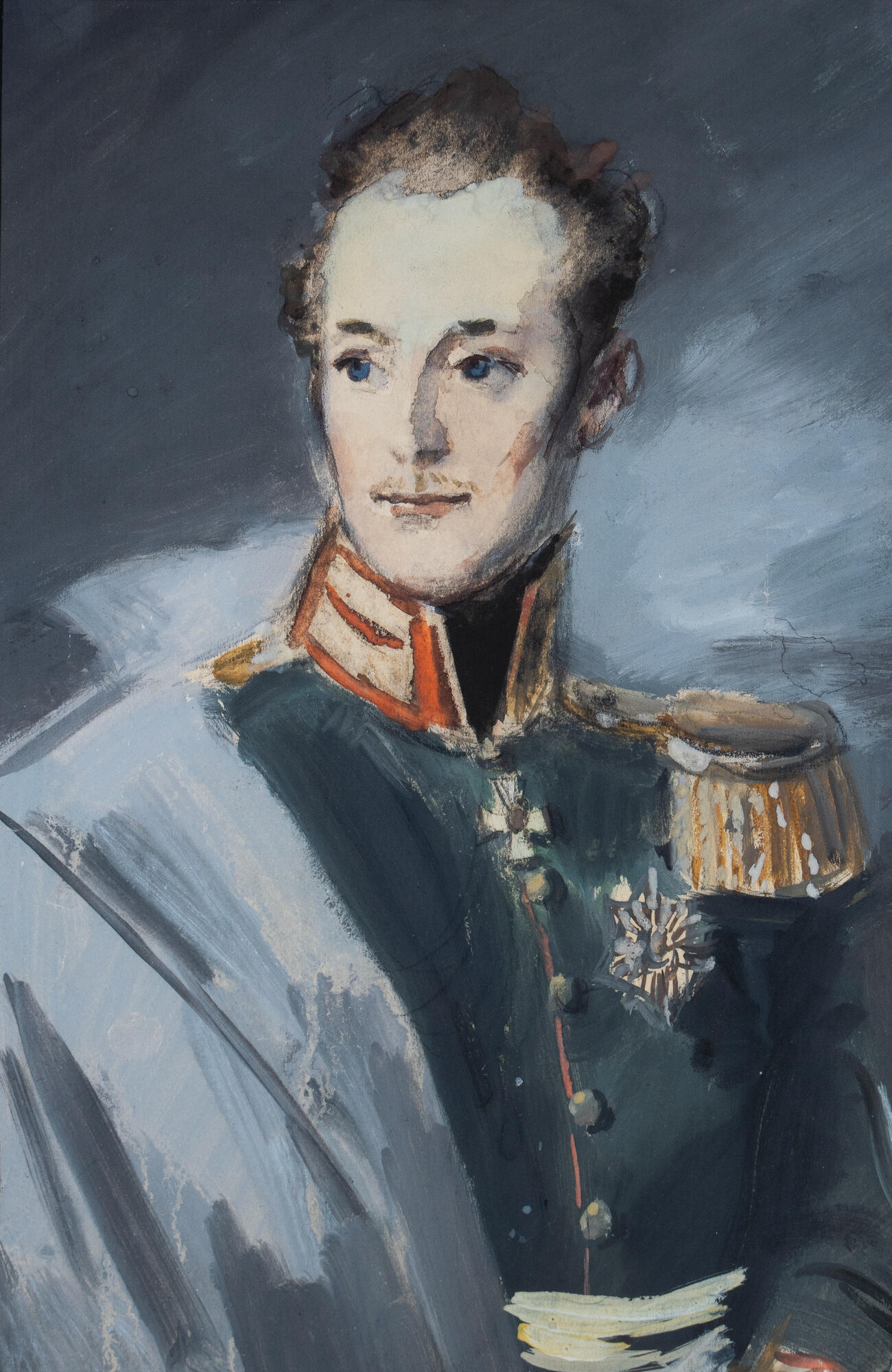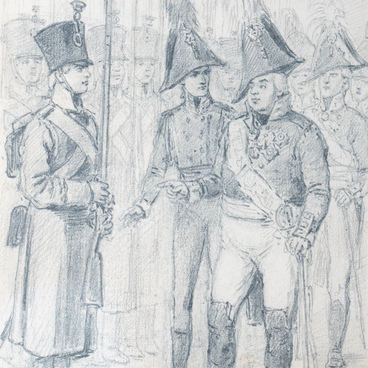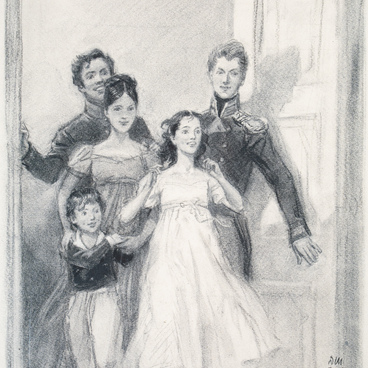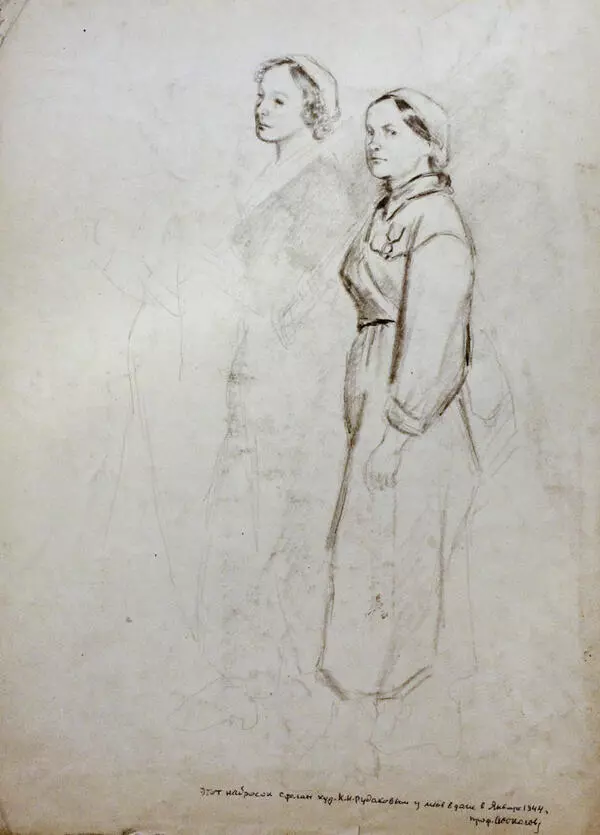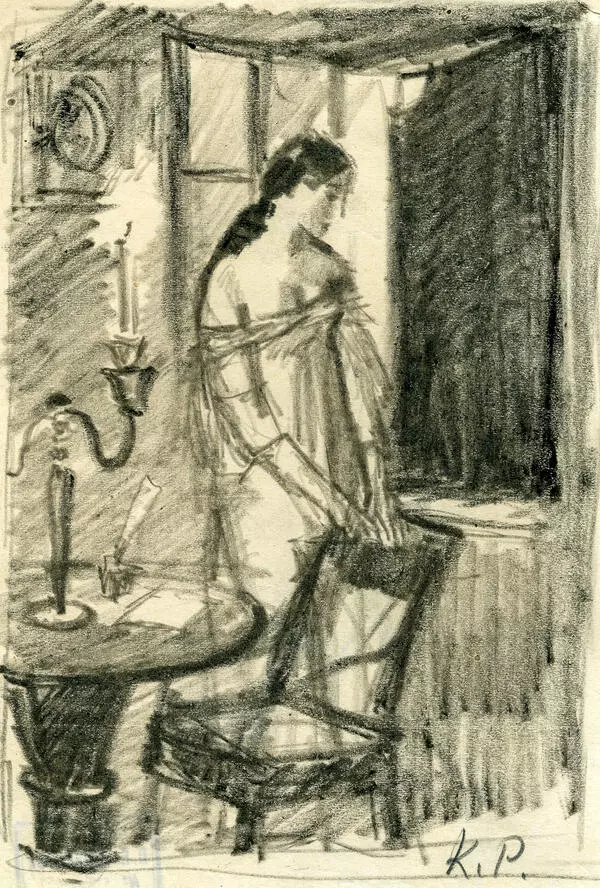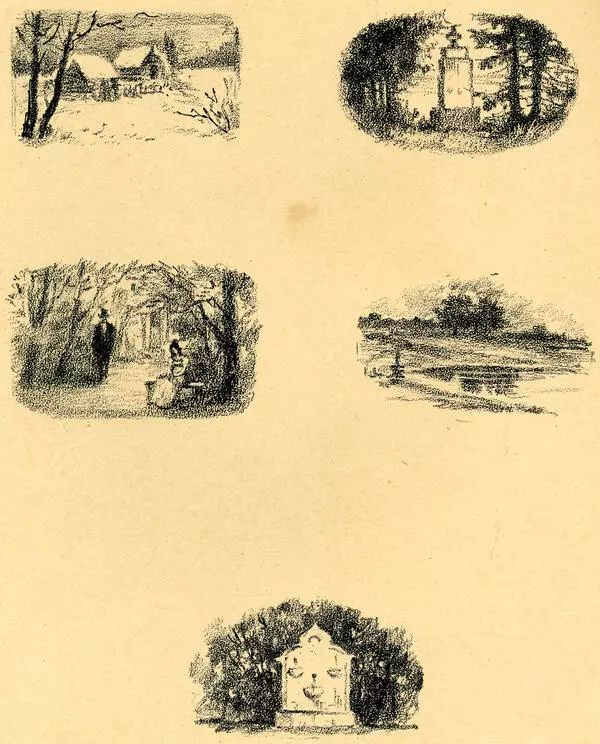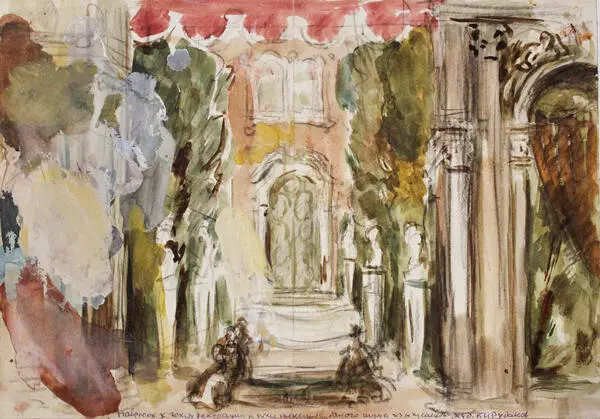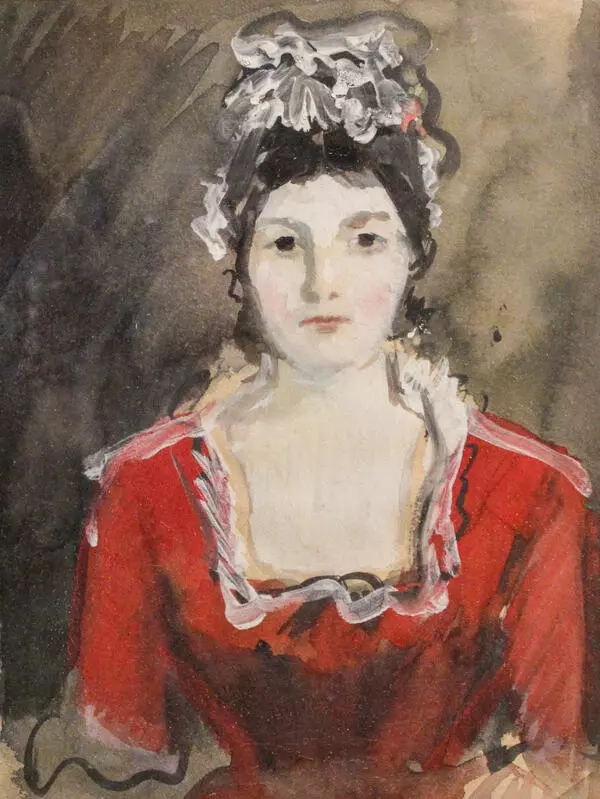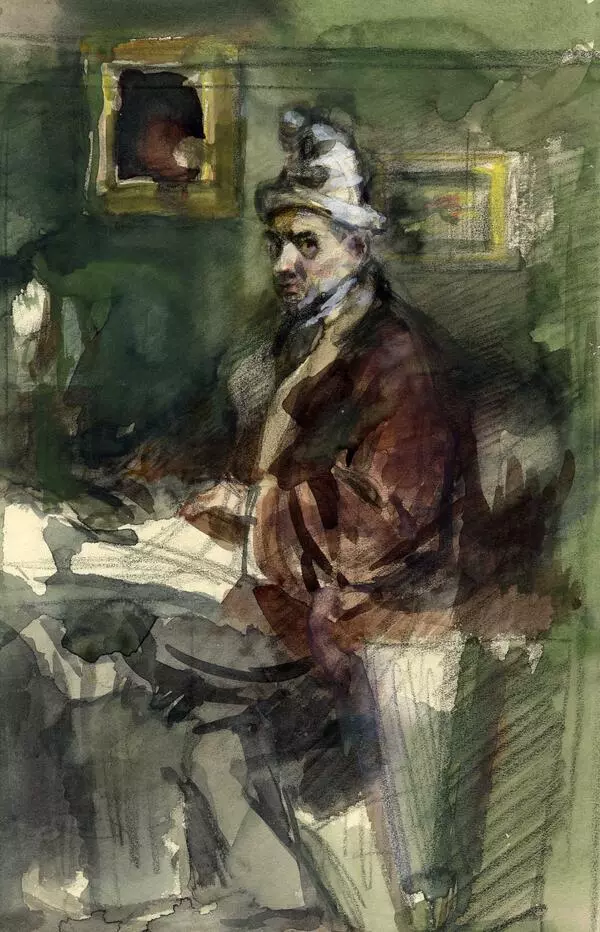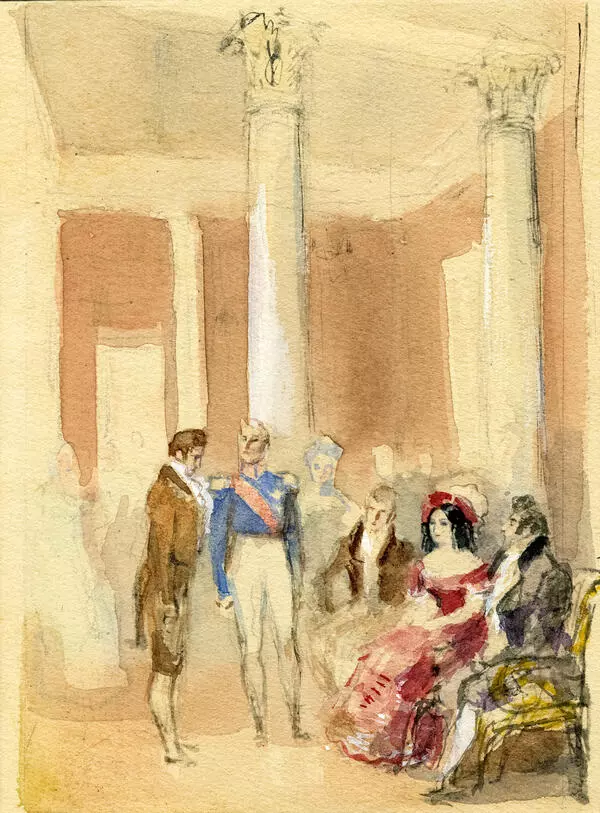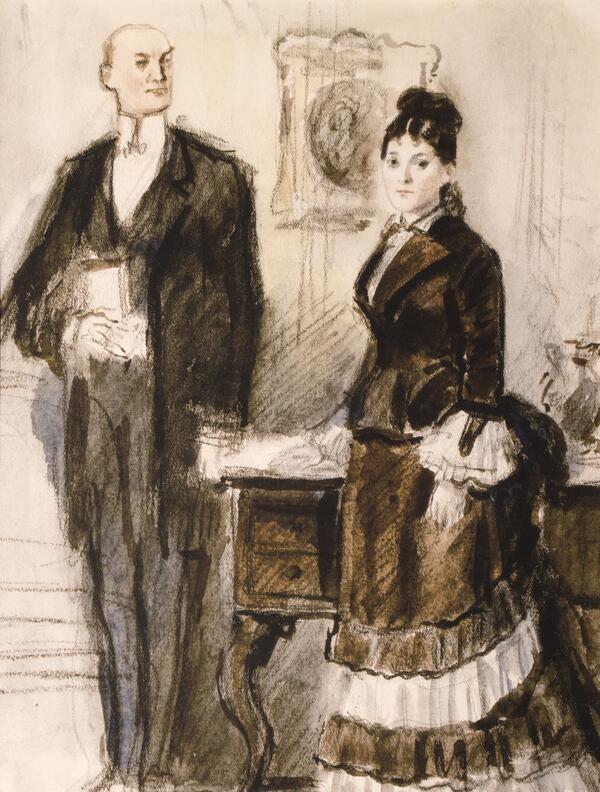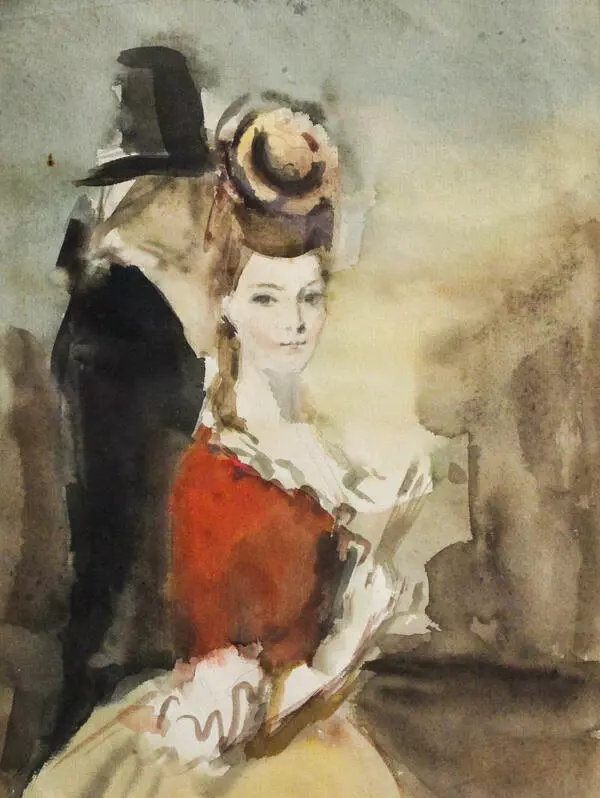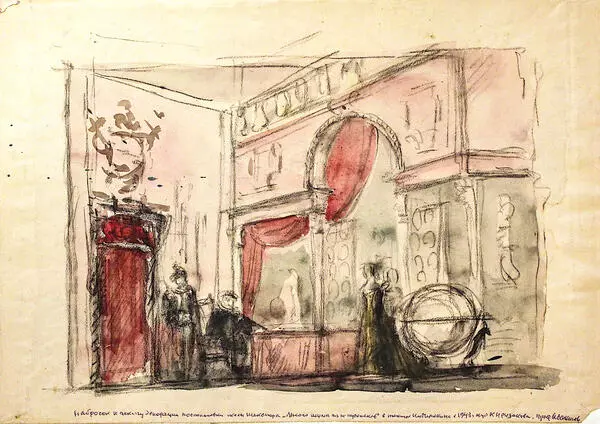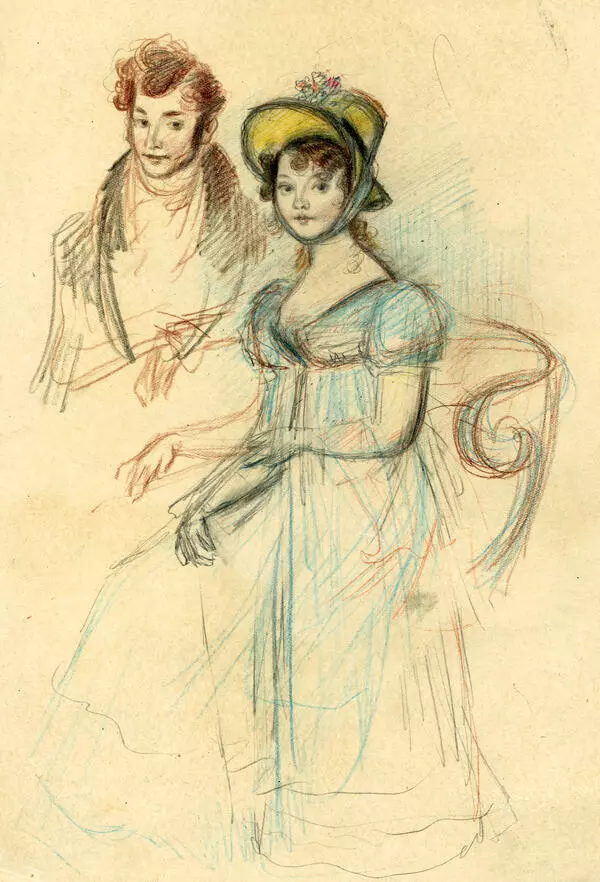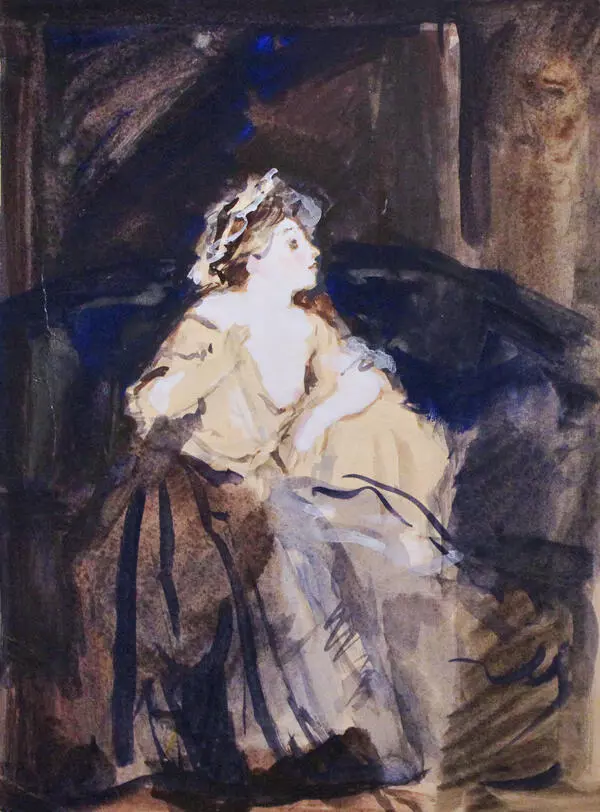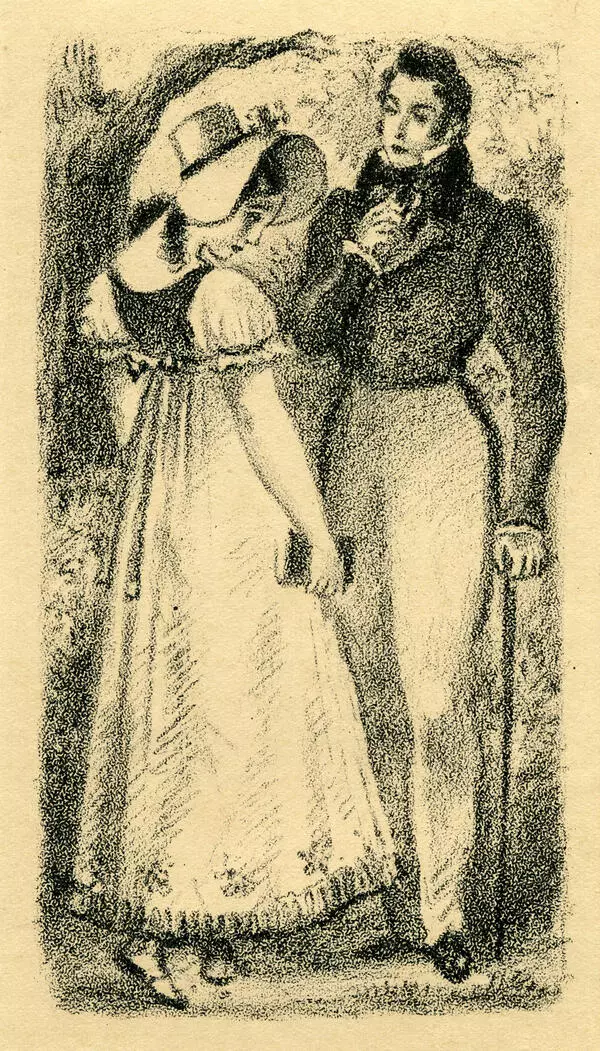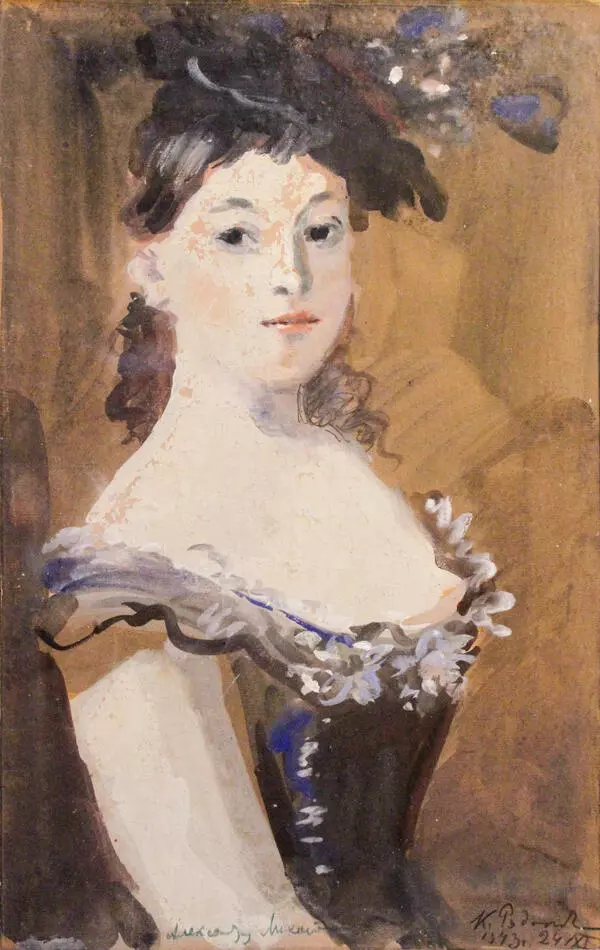During the Great Patriotic War, the novel “War and Peace” got its second wind. Tolstoy’s characters became close to the Soviet people as similar circumstances united them. In besieged Leningrad, while rereading Tolstoy’s novel, the artist Konstantin Rudakov made pencil sketches and watercolor studies in his album. The artist did not seek to illustrate the plot. He chose the most important scenes dedicated to the Patriotic War of 1812, analyzed Tolstoy’s interpretation of historic figures and created a portrait gallery of the novel’s fictional characters.
Three portraits of Natasha Rostova give a vivid idea of the development of her character, masterfully created by Tolstoy. Unfortunately, death prevented Rudakov from completing this large and interesting work. Another key character in the novel, Prince Andrey Bolkonsky, is one of Tolstoy’s favorites. In the first completed edition of War and Peace, Prince Andrey doesn’t die in the Battle of Borodino but is cured of his wounds and returned to duty. He steps back from Natasha and leaves her to Pierre, and in the epilogue, it’s not Pierre arguing with Nikolai Rostov, but Bolkonsky.
Tolstoy was tempted to make Prince Bolkonsky a Decembrist. Echoes of this idea remained in the final version of the novel. Prince Andrey is a military man, like many future Decembrists; he is characterized by his support of republican ideas, in particular, his views are in line with Rousseau’s ideas in “The Social Contract”. He advocated reforms, helped Speransky, freed his peasants. Finally, unlike the dreamy Pierre, Andrey is pragmatic and down-to-earth. He has already performed a feat, risking his life, and is morally prepared to repeat it once more. However, the author decided otherwise.
The internal logic of the development of this tragic character suggested a different ending. Prince Andrew had to suffer, his whole life was leading up to this, and before his death, he needed to find resolve to the thoughts that had always been on his mind. This was explored when he lay ill on his deathbed, in the unparalleled description of his death. These are especially important pages of the novel from a worldview standpoint. The analogy “life is sleep, death is awakening” refers to deep religious and philosophical layers of world culture.